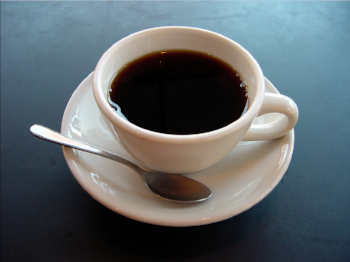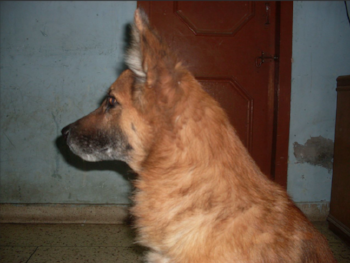Hello my friends
I'm very happy you are visiting!

Hello my friends
I'm very happy you are visiting!

So classic.

It’ll blow over.
I hope.
I drink near to 2 cups of coffee in the morning.
14ounces.
I devolved on that amount the hard way, starting by not paying attention to signals my body sent me.
And I paid the price of the ignorant.
Freely drinking coffee 15 years ago.
No reason not to.
Except that on this morning, I remember well, engaged in work at home, alone, my daughter off at school, using continuous pulls at my coffee to replace company.
On this morning, my mouth telling me: Not tasting good.
Warning me the coffee doing me harm.
Me not listening.
Drinking through the stop sign.
Never a good idea, driving or drinking coffee.
Suddenly, the object of a dizzy spell, I found myself executing a slam-sit down into my rocker where I stayed, basically, for the next 18 hours, or until I felt well enough to make it to the doctor’s office.
A dizzy spell.
First ever.
Concerned the doctors.
All day in the doctor’s office for a long series of tests, every test they knew how to throw at me.
Never been sick but feeling fine the next day, the day of the testing.
All the tests negative.
They didn’t know what brought on the dizzy spell.
But I’m to pay close attention and come back right away if something is amiss.
I would.

Some of us are born alert.
But I was warned.
It was the four-cup morning-coffee pot I made every morning to last me the morning.
It was drinking those 32 ounces of coffee against the signals my body was sending me.
It was the lesson my body taught me for the 100th time: It isn’t good to fool Mother Nature.
Next day I made three cups of coffee only, carefully measured out.
I drank carefully.
Two cups tasted fine.
Half way through the third cup, the coffee was not tasting delicious.
I stopped.
In the months that followed, my morning coffee intake diminished until now I’m down to 14 ounces.
Carefully measured.
Yesterday, I woke early, 4.00am.
Normal, is 4.30am.
I have a cold and being sick throws my rhythms off.
I drank a cup of coffee.
Delicious.
I poured the remaining 6 ounces.
The first two ounces tasted good, the next sip didn’t.
I poured the 4 ounces of coffee down the drain.
Aware.
Today back to the 14 ounces.
All good.
But me, edgy.
Attentive.
Drinking 14 ounces of morning coffee daily for as long as my body permits.
___________________________________
Tagging Today
Saturday, November 17, 2018
My 219th consecutive posting.
Time is 12.01am.
Boston’s temperature will reach a high of 47* with partly sunny skies and a breeze.
Dinner is fried cubanelle peppers and seared/broiled steak dredged in the oil from the pepper fry. Delicious and easy.
__________________________
Question of the Day:
What is coffee?
Hint:
_______________________________
Love your notes.
Contact me @ domcapossela@hotmail.com

From Tommie Toner:
The only thing I like about cold weather is cooking hearty dishes and beef stew is a favorite.
I usually buy a chuck roast and cut into cubes followed by mushrooms, carrots, celery, potatoes, onions, garlic, spices, wine and stock.
But I have never cooked it in the oven. .
Will try your recipe. We always serve with a simple lettuce salad and homemade cornbread (we do not add sugar to cornbread).
Sometimes I serve it with crusty bread.
Thanks for sharing your recipe.
tommie
Web Meister Responds: Tommie’s notes always add to the moment. Thanks, my dear.
_______________________________
Short Takes: City Life
Left:
Sunrise from apartment window.
Second from left:
Leaves on the Boston Common.
Second from right:
Horny panther on building.
Right:
Ever notice the profusion of signs on Charles Street?

Unroasted coffee beans.
_____________________________
Answer to Question of Day:
What is coffee?
Coffee is a brewed drink prepared from roasted coffee beans, the seeds of berries from certain Coffea species.
The genus Coffea is native to tropical Africa (specifically having its origin in Ethiopia and Sudan) and Madagascar, the Comoros, Mauritius, and Réunion in the Indian Ocean.
Coffee plants are now cultivated in over 70 countries, primarily in the equatorial regions of the Americas, Southeast Asia, Indian subcontinent, and Africa.
The two most commonly grown are C. arabica and C. robusta.
Once ripe, coffee berries are picked, processed, and dried.
Dried coffee seeds (referred to as "beans") are roasted to varying degrees, depending on the desired flavor.
Roasted beans are ground and then brewed with near-boiling water to produce the beverage known as coffee.


Over the door of a Leipzig coffeeshop is a
sculptural representation of a man in Turkish dress,
receiving a cup of coffee from a boy.
Coffee is darkly colored, bitter, slightly acidic and has a stimulating effect in humans, primarily due to its caffeine content.
It is one of the most popular drinks in the world, and it can be prepared and presented in a variety of ways (e.g., espresso, French press, café latte).
It is usually served hot, although iced coffee is a popular alternative.
Clinical studies indicate that moderate coffee consumption is benign or mildly beneficial in healthy adults, with continuing research on whether long-term consumption lowers the risk of some diseases, although those long-term studies are of generally poor quality.
The earliest credible evidence of coffee-drinking appears in Yemen in southern Arabia in the middle of the 15th century in Sufi shrines.
It was here in Arabia that coffee seeds were first roasted and brewed in a similar way to how it is now prepared.
But the coffee seeds had to be first exported from East Africa to Yemen, as the Coffea arabica plant is thought to have been indigenous to the former.
Yemeni traders took coffee back to their homeland and began to cultivate the seed.
By the 16th century, the drink had reached Persia, Turkey, and North Africa. From there, it spread to Europe and the rest of the world.
As of 2016, Brazil was the leading grower of coffee beans, producing one-third of the world total.
Coffee is a major export commodity, being the top legal agricultural export for numerous countries.
It is one of the most valuable commodities exported by developing countries.
Green, unroasted coffee is one of the most traded agricultural commodities in the world.
Some controversy has been associated with coffee cultivation and the way developed countries trade with developing nations, as well as the impact on the environment with regards to the clearing of land for coffee-growing and water use.
Consequently, the markets for fair trade and organic coffee are expanding.

If your still not sated, check out the pocketbook.
__________________________________
Good morning on this Saturday, November 17
Coffee, several of us are drinking it right now, as we read today’s thoughts.
The addiction of coffee; the danger. Where it comes from. It’s role as a Fair Traded commodity – so much healthier than driving the price down to a point where workers can hardly survive. Tommie Toner shared some thoughts on beef stew and we got some shots of City Life.
Che vuoi? Le pocketbook?
Have a good season, my friends.
A wonderful mask with which to hide the painful truth: it leaves in its wake a horribly wearing winter season.
See you soon.
Love
Dom